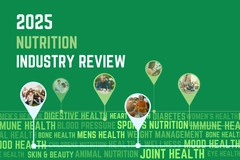
- Industry news
Industry news
- Category news
- Reports
- Key trends
- Multimedia
Multimedia
- Journal
- Events
- Suppliers
Suppliers
- Home
- Industry news
Industry news
- Category news
- Reports
- Key trends
- Multimedia
Multimedia
- Events
- Suppliers
Suppliers
Protein synthesis and net muscle gain in seniors improved with HMB metabolite supplementation, finds study

12 Apr 2021 --- Supplementation with beta-hydroxy beta-methylbutyrate (HMB) promotes increased lean muscle mass in older adults within four weeks, according to a new meta-analysis of eight randomized controlled trials.
The new study consolidates the ingredient’s healthy aging positioning for consumers looking to maintain muscle mass and function that decreases with age.
“HMB is a metabolite of the essential amino acid leucine that is naturally produced in many tissues in the body. HMB is also present in breast milk and in plants in measurable amounts,” Larry Kolb, president of HMB supplier TSI Group, tells NutritionInsight.
HMB is positioned to help consumers increase protein synthesis while reducing the rate of protein breakdown, yielding a net muscle mass gain.
The recent review, published in European Geriatric Medicine, also unveils that HMB is a safe and effective dietary intervention, compared to resistance training, for those with limited mobility or at high risk for fall-related injuries.
 People with limited mobility may benefit from dietary interventions compared to resistance training for maintaining muscle mass.“Many [older people] have pursued simply increasing protein intake, but the consumer isn’t getting a return from this simple solution,” says Kolb.
People with limited mobility may benefit from dietary interventions compared to resistance training for maintaining muscle mass.“Many [older people] have pursued simply increasing protein intake, but the consumer isn’t getting a return from this simple solution,” says Kolb.
“The consumer is looking for something more.”
Utilizing protein better
Consumers, particularly in Europe and North America, are increasingly seeking more protein for their general health and well-being. However, there are limits to how much the body can process, Kolb asserts.
“Protein is incredibly important, but excess protein intake over the individual requirement does not result in measurable changes in muscle health.”
HMB’s dual-action mechanism can help the consumer utilize the protein consumed and improve their overall muscle health, explains Kolb.
It can also be beneficial for those who are not getting enough protein in their diet to better utilize the protein they consume, the researchers write.
Change in muscle, not fat
The review authors, representing the Department of Geriatric Cardiology at the Second Affiliated Hospital of Chongqing Medical University in China, forecast that HMB supplementation is expected to be an important class of dietary interventions.
The review evaluates eight articles, including nine randomized, placebo-controlled trials involving participants with a mean age of 65, using HMB or a combination of substrates.
 HMB is a metabolite of the essential amino acid leucine that naturally occurs in the body’s tissues and breast milk.In the trials, HMB was a primary intervention for no fewer than four weeks and researchers measured lean mass (fat-free) at baseline and post-intervention.
HMB is a metabolite of the essential amino acid leucine that naturally occurs in the body’s tissues and breast milk.In the trials, HMB was a primary intervention for no fewer than four weeks and researchers measured lean mass (fat-free) at baseline and post-intervention.
“The results of the meta-analysis show that oral HMB supplementation can effectively increase muscle mass, but the change in fat mass is not significant,” they write.
The increase in muscle mass is attributed to the net positive balance of protein renewal through HMB’s protein synthesis stimulation and protein degradation attenuation. Doses of HMB ranged from 1.5 g/day to 3 g/day.
While most of the studies’ participants were healthy older adults, one involved older adults diagnosed with stage four cancer; another involved healthy older adults who had been on bed rest for ten days.
High purity HMB
Traditionally HMB has been marketed as a calcium salt, but in recent years HMB has also been marketed in free acid form, identical to that produced, he says.
HMB is produced by TSI’s proprietary process that yields “the highest purity” CaHMB.
“Like many nutrients available for supplementation, HMB is synthesized and the HMB itself is identical to that produced in animals, humans and plants.”
Kolb details that the minimum supplement dose is 1.5 g/day, and for optimal benefit, the company recommends 3 g of CaHMB per day.
“Additionally, scientific data suggests adequate vitamin D status is incredibly important for optimal muscle health benefits from HMB supplementation,’ he says.
Vitamin D has also been found to work synergistically with micronutrients such as vitamin K2.
Healthy aging never gets old
For the TSI Group, this meta-analysis is timely given the growing healthy aging market segment.
“There is a very strong need among consumers and healthcare practitioners for more information on maintaining muscle mass and function in healthy older adults,” Kolb affirms.
Earlier this month, the healthy aging category was spotlighted by an industry roundtable.
By Missy Green











